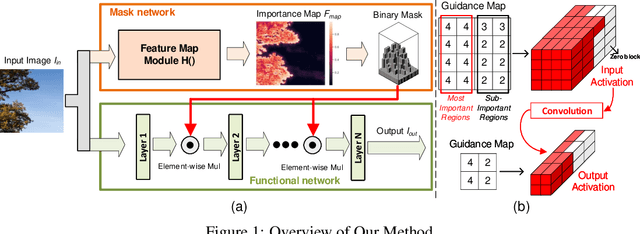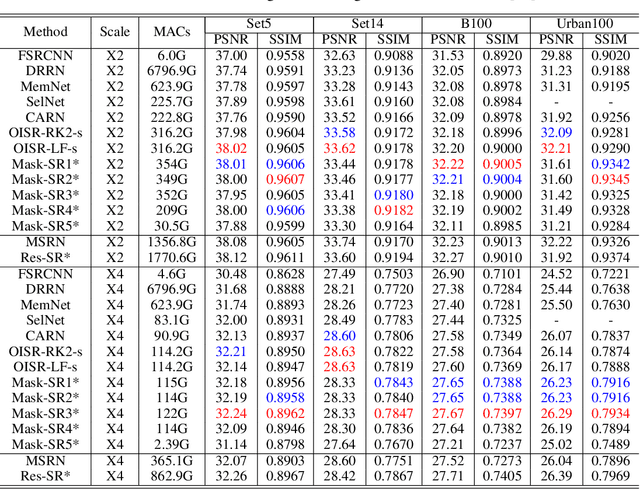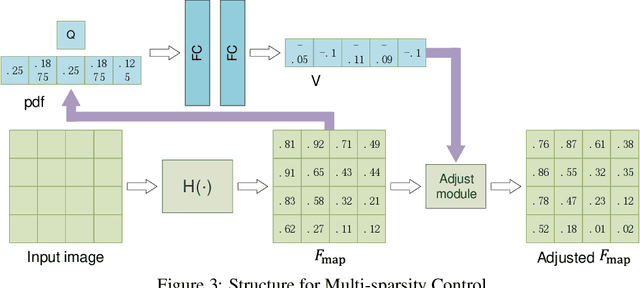Adaptive Structured Sparse Network for Efficient CNNs with Feature Regularization
Paper and Code
Oct 21, 2020



Neural networks have made great progress in pixel to pixel image processing tasks, e.g. super resolution, style transfer and image denoising. However, recent algorithms have a tendency to be too structurally complex to deploy on embedded systems. Traditional accelerating methods fix the options for pruning network weights to produce unstructured or structured sparsity. Many of them lack flexibility for different inputs. In this paper, we propose a Feature Regularization method that can generate input-dependent structured sparsity for hidden features. Our method can improve sparsity level in intermediate features by 60% to over 95% through pruning along the channel dimension for each pixel, thus relieving the computational and memory burden. On BSD100 dataset, the multiply-accumulate operations can be reduced by over 80% for super resolution tasks. In addition, we propose a method to quantitatively control the level of sparsity and design a way to train one model that supports multi-sparsity. We identify the effectiveness of our method for pixel to pixel tasks by qualitative theoretical analysis and experiments.
 Add to Chrome
Add to Chrome Add to Firefox
Add to Firefox Add to Edge
Add to Edge